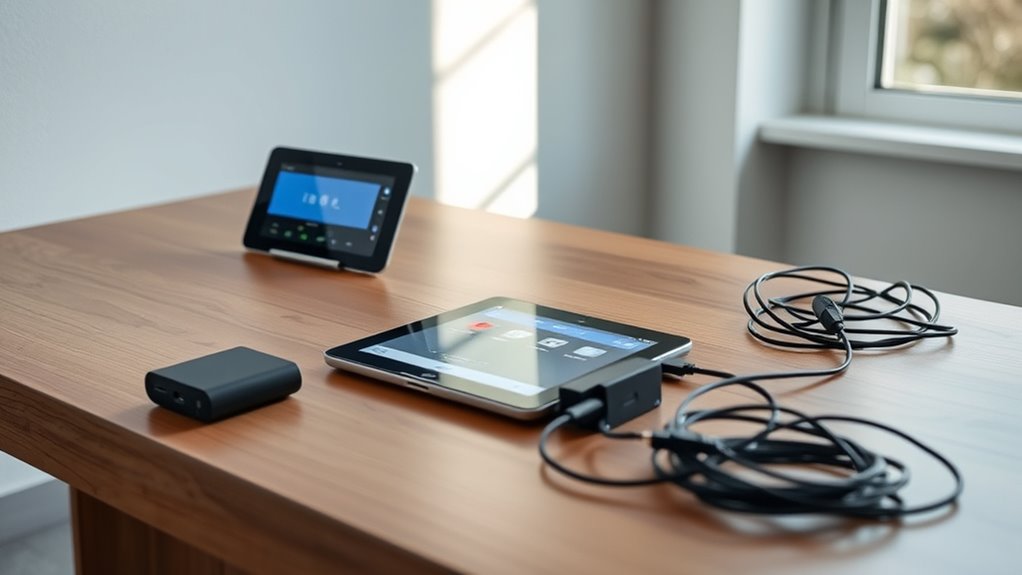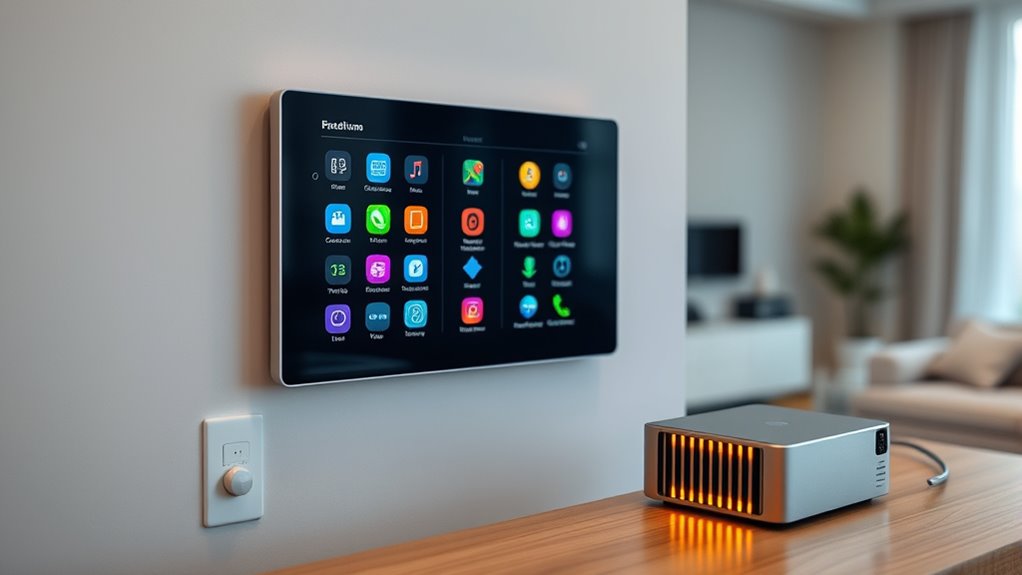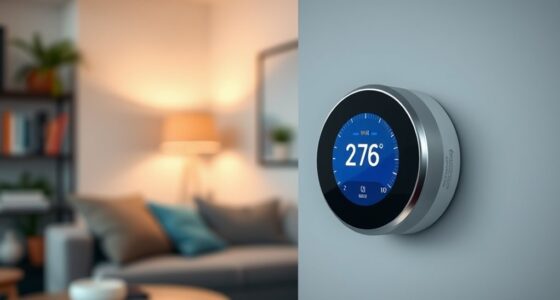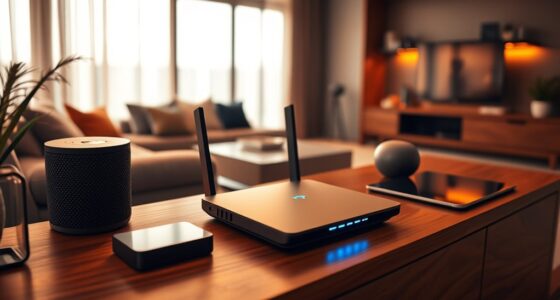To protect your smart home automations, it’s essential to create reliable backups. Use automation scripting to schedule regular backups of your settings, routines, and scripts, ensuring that you don’t lose your configurations due to errors or device failures. Cloud storage solutions like Google Drive or Dropbox make it easy to store these backups off-site, giving you quick access when needed. Keep these strategies in mind, and you’ll discover more ways to secure your system effectively.
Key Takeaways
- Regularly back up automation scripts, device settings, and schedules to prevent data loss.
- Utilize cloud storage services like Google Drive or Dropbox for off-site backup and easy recovery.
- Automate backups with scripting to schedule regular, hands-free data preservation.
- Use trusted third-party backup tools or integrated platform features for reliable data protection.
- Maintain version control of backups to enable quick restoration and safeguard complex automation setups.

Have you ever considered what would happen if your smart home automation system suddenly failed? It’s a formidable thought, especially if you rely heavily on automation scripting to control lights, thermostats, security cameras, and other devices. Without proper backups, you risk losing your custom settings, routines, and configurations, which can turn your smart home into a chaotic space. The good news is that implementing reliable backup strategies can prevent this nightmare, ensuring your system stays operational and your preferences are preserved.
One of the most effective ways to safeguard your automation setup is by using cloud storage. Cloud storage allows you to save your automation scripting files and system configurations remotely, making them easily accessible and recoverable if something goes wrong locally. Instead of manually copying files to a USB drive or local server, you can automate the process so that your system automatically uploads backups to the cloud at regular intervals. This approach guarantees that your latest configurations are always stored securely off-site, reducing the risk of data loss due to hardware failure, theft, or accidental deletion.
Using cloud storage automates backups, ensuring your smart home configs are always safe and accessible off-site.
Automation scripting plays a critical role in creating a resilient backup process. By scripting regular backups, you eliminate the need for manual intervention, saving time and reducing human error. You can set scripts to run daily or weekly, capturing all recent changes to your automation routines. These scripts can also be customized to include not just scripts themselves but also device settings, schedules, and other important data. With scripting, you can specify exactly what needs to be backed up and where it should be stored, ensuring thorough coverage of your system’s configuration.
Furthermore, integrating automation scripting with cloud storage can streamline your backup workflow. Many smart home platforms support custom scripts or third-party tools that automate uploading backups to cloud services like Google Drive, Dropbox, or dedicated cloud backup solutions. This automation minimizes downtime and hassle, giving you peace of mind knowing that your data is protected without constant manual oversight. Plus, with version control, you can revert to previous configurations if a recent change causes issues, making troubleshooting much easier. Additionally, selecting a reliable Vetted backup method, such as trusted third-party solutions or proven cloud services, can significantly enhance your system’s resilience and recovery speed.
Frequently Asked Questions
How Often Should I Update My Smart Home Backup?
You should update your smart home backup at least once a month to guarantee device compatibility and data safety. Regular backup frequency helps capture any recent changes in your automation setup and prevents data loss if devices or systems update or malfunction. If you frequently add or modify automations, consider backing up more often—weekly or after significant changes—to keep your system current and protected.
Can Backups Restore Specific Device Settings?
Yes, backups can restore specific device configurations during backup restoration. When you perform a backup, your smart home system saves detailed settings for each device. If you need to revert a device to a previous state, you can use the backup to restore only that device’s configuration without affecting others. This targeted restoration helps you manage your smart home efficiently, ensuring your devices function exactly as you want.
Are There Secure Cloud Backup Options?
Yes, secure cloud backup options exist, and over 60% of smart home users prefer cloud solutions for safety. These backups utilize cloud encryption to protect your data, ensuring your device synchronization remains safe from unauthorized access. By choosing providers that prioritize security, you can confidently store your automation settings, knowing your information stays private while allowing seamless restoration if needed.
What Is the Cost of Comprehensive Backup Solutions?
Thorough backup solutions typically cost between $5 to $20 per month, depending on your storage needs. You’ll want cloud storage that offers robust encryption methods to keep your data secure. Many providers include automatic backups, version history, and access controls. By investing in a reliable service, you guarantee your smart home automations are protected against data loss or cyber threats, giving you peace of mind and seamless recovery when needed.
How Do I Recover From a Failed Backup?
If your backup fails, start by verifying the backup to identify issues. Then, follow restore procedures specific to your system, making certain you select the most recent, verified backup. If problems persist, consult your backup provider’s support resources or logs for troubleshooting tips. Regular backup verification helps prevent this situation, and always test restore procedures periodically to ensure your data is recoverable when needed.
Conclusion
Think of your smart home as a delicate garden. Backups are like watering cans—you’ll thank yourself later when a sudden storm or mistake threatens to wither your carefully nurtured automations. Just as a gardener always keeps backup water, always save your settings. In doing so, you guarantee your digital sanctuary can bloom again, resilient and vibrant, no matter what surprises come your way. Protect your smart home like tending your cherished garden—consistently and with care.








